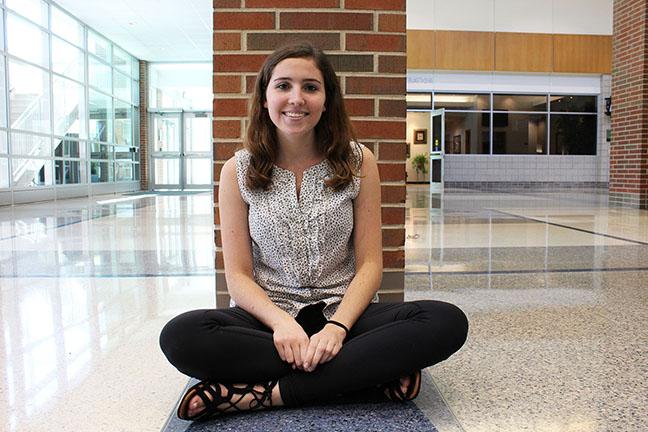In my IB History of the Americas class, many discussions include a conservative denouncing liberal views or vise versa. Ironically, in the same classroom, we learned about the first president of the United States warning Americans against a divided government due to political parties.
With the 2016 presidential election approaching, campaigns are amping up and social media is increasingly filled with heated arguments over controversial issues. While many of us may find a common enemy in Donald Trump, Democrats and Republicans are having more and more trouble locating common ground.
Social media has broadened the divide: How often people see or respond to an opinion they disagree with on social media is influenced by where they lie on the political spectrum. A Pew Research survey conducted in 2014 discovered that conservatives are more likely to read political opinions similar to their own on Facebook. On the other hand, liberals are more likely to unfriend or unfollow someone based on a political statement they disagree with. In other words, conservatives don’t branch out as much, and while liberals expose themselves to other opinions, they don’t tolerate them. This is only the surface of the growing divide between liberals and conservatives.
In addition to social media, the news organizations Americans rely on are dependent on their social views. Conservatives cluster tightly around Fox News, while liberals jump around several organizations, including NPR and The New York Times. During campaigning and debates, the two parties seem as though they are in two different countries. Democrats discuss equality, voting rights, climate change, the gap between the rich and the poor. Republicans focus heavily on illegal immigration, Planned Parenthood and a nuclear Iran.
The partition between Democrats and Republicans has steadily increased for decades. Surveys conducted by Pew Research in 1994 and 2004 have shown that approximately half of Americans take a roughly equal number of liberal and conservative positions, making up “the middle.”
The number of Americans in the middle decreased to 39 percent in 2014. In addition, Americans who are consistently conservative or consistently liberal has doubled over the past two decades. This shows the ideological overlap between Democrats and Republicans has almost disappeared. Instead of taking issues one by one and considering their individual stance, people are increasingly blindly following fellow liberals or conservatives.
In order to successfully run this country, we need to remind ourselves that we all have the same goal: to continue to grow and improve America.
The views in this column do not necessarily reflect the views of the HiLite staff. Reach Mary Salzmann at msalzmann@hilite.org.

































![AI in films like "The Brutalist" is convenient, but shouldn’t take priority [opinion]](https://hilite.org/wp-content/uploads/2025/02/catherine-cover-1200x471.jpg)









































![Review: “The Immortal Soul Salvage Yard:” A criminally underrated poetry collection [MUSE]](https://hilite.org/wp-content/uploads/2025/03/71cju6TvqmL._AC_UF10001000_QL80_.jpg)
![Review: "Dog Man" is Unapologetically Chaotic [MUSE]](https://hilite.org/wp-content/uploads/2025/03/dogman-1200x700.jpg)
![Review: "Ne Zha 2": The WeChat family reunion I didn’t know I needed [MUSE]](https://hilite.org/wp-content/uploads/2025/03/unnamed-4.png)
![Review in Print: Maripaz Villar brings a delightfully unique style to the world of WEBTOON [MUSE]](https://hilite.org/wp-content/uploads/2023/12/maripazcover-1200x960.jpg)
![Review: “The Sword of Kaigen” is a masterpiece [MUSE]](https://hilite.org/wp-content/uploads/2023/11/Screenshot-2023-11-26-201051.png)
![Review: Gateron Oil Kings, great linear switches, okay price [MUSE]](https://hilite.org/wp-content/uploads/2023/11/Screenshot-2023-11-26-200553.png)
![Review: “A Haunting in Venice” is a significant improvement from other Agatha Christie adaptations [MUSE]](https://hilite.org/wp-content/uploads/2023/11/e7ee2938a6d422669771bce6d8088521.jpg)
![Review: A Thanksgiving story from elementary school, still just as interesting [MUSE]](https://hilite.org/wp-content/uploads/2023/11/Screenshot-2023-11-26-195514-987x1200.png)
![Review: "When I Fly Towards You", cute, uplifting youth drama [MUSE]](https://hilite.org/wp-content/uploads/2023/09/When-I-Fly-Towards-You-Chinese-drama.png)
![Postcards from Muse: Hawaii Travel Diary [MUSE]](https://hilite.org/wp-content/uploads/2023/09/My-project-1-1200x1200.jpg)
![Review: "Ladybug & Cat Noir: The Movie," departure from original show [MUSE]](https://hilite.org/wp-content/uploads/2023/09/Ladybug__Cat_Noir_-_The_Movie_poster.jpg)
![Review in Print: "Hidden Love" is the cute, uplifting drama everyone needs [MUSE]](https://hilite.org/wp-content/uploads/2023/09/hiddenlovecover-e1693597208225-1030x1200.png)
![Review in Print: "Heartstopper" is the heartwarming queer romance we all need [MUSE]](https://hilite.org/wp-content/uploads/2023/08/museheartstoppercover-1200x654.png)




